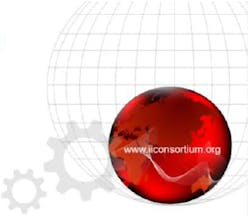The IIC, an open membership organization, with 167 members from 24 countries, was formed to accelerate the development, adoption and wide spread use of interconnected machines and devices and intelligent analytics. In the field of software architecture or enterprise architecture a reference architecture provides a template solution for a particular purpose. It also provides a common vocabulary with which to discuss implementations.
If you have spent your career in industry making factories run better and delivering products, this may not sound like much – but it really is. You’ve probably consumed some of the products of the information tech side of things—controllers, networks, sensors and various kinds of software. In many cases they arrived in their finished form thanks to a process that was highly proprietary. Sometimes that has been fine, but often it means that additions and updates are complicated by that vendor’s peculiarities. However, thanks to things like reference architecture documents, standardization and interoperability is growing ever-more-common in information tech, which benefits everyone, ultimately.
Now, building on those generations of investments and achievements, we are watching the IIoT come into existence. But for that process to really succeed it is critical to have a starting point for joint action– a sort of combination Rosetta Stone and constitution, if you will, that can help practitioners and vendors of every stripe , both within information tech and in the world of industry, to bring their products and their creativity into something approaching harmony.
The IIC as a whole and its Reference Architecture in particular are an attempt to bring some rationality to the process. As Rebecca Merrett points out in a recent article about the IIC Reference Architecture (IIC RA); there’s no point in having an IIoT unless all the “things” can talk to each other. The interesting and inspiring point for me is that “they” have done it before. The IIC, which has Richard Soley as its executive director is, in turn, managed by the Object Management Group, Inc. (OMG), a very influential organization in the software world that had Soley as its president for much of its 25 plus years. OMG, (not to be confused with the texting expletive!), has accomplished much – mostly behind the scenes – to power the modern world of software and so is well versed in what it takes to involve stakeholders and move processes along at a reasonable pace. Reference architecture documents are its specialty.
Unlike OMG, which directly touched a relatively small universe of software experts, the IIC Reference Architecture will inevitably touch millions of people globally and will influence the world everyone else lives in for years to come.
Because of its foundational nature, the Reference Architecture document is broad and encompasses many domains that are crucial to the full success of IIoT. The first seven chapters set the stage for describing and defining the types of systems in an IIoT and also include descriptions of basic architecture (e.g. security and architectural tiers).
Chapters 8 through 16 focus on systems issues (such as connectivity, data management, and storage). There is also a lengthy section focusing on vocabulary, since this is one of the areas where unproductive divergences can begin.
The IIC RA will no doubt go through many future iterations but it is impressively comprehensive, exhaustively covering things like the various perspectives by which different stakeholders might view the IIC as well as more concrete concerns regarding issues like security and privacy. Reading it (recommended!) or at least scanning it is worthwhile because it can remind you, regardless of where you stand relative to the IIC, just how big the IIoT will be.
As the authors note, “The force behind the Industrial Internet is the integration of Information Technologies (IT) and Operational Technologies (OT).” Kudos for “writing the first chapter” in what is bound to be an amazing story of growing and productive integration.
See a video from Real-Time Innovations (RTI) that helps to explain the IIC Reference Architecture.
Alan R. Earls is a Boston-based writer focused on technology, business, and manufacturing — a field where he spent the earliest part of his career. He has written for publications and websites as diverse as The Boston Globe, Computerworld and Modern Infrastructure as well as Industry, The Manufacturer, and Today's Machining World.





